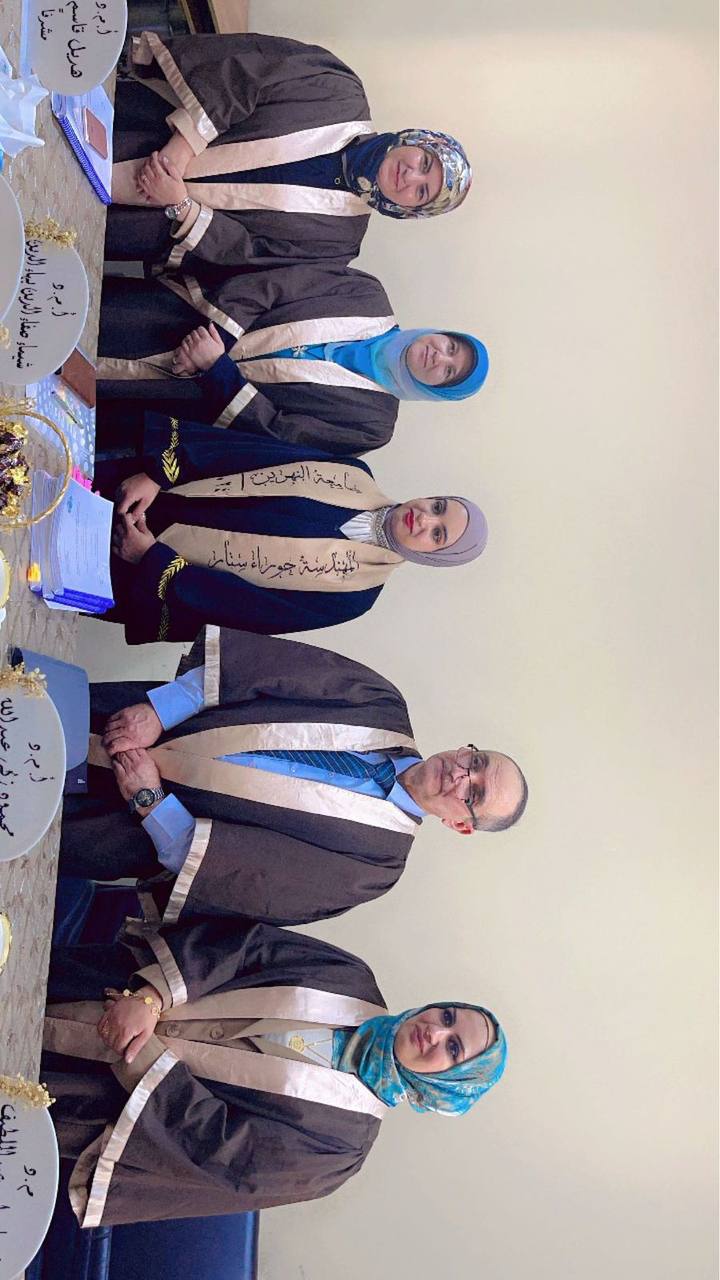Visitors: 20490624 Views
Done By: Department of Computer Engineering
Post Date: 2024-08-28
Last Browse: 2025-04-05

On Wednesday, 28/8/2024, the master's student (Hawraa Sattar Saleh) was discussed in the department council hall about her thesis entitled:
Improved Deep Learning Method for Kidney Ultrasound Image Processing and Diagnosis
Improving the deep learning method in treating and diagnosing kidney diseases using ultrasound images
The discussion committee consists of the gentlemen listed below:
Assistant Professor Mahmoud Zaki Abdullah / Al-Mustansiriya University / College of Engineering. Chairman
Assistant Professor Shimaa Safaa Al-Din Baha Al-Din / Al-Nahrain University / College of Engineering. Member
Assistant Professor Shimaa Walid Abdul Latif / Al-Nahrain University / College of Engineering. Member
Assistant Professor Hadeel Qasim Wadi / Al-Nahrain University / College of Engineering. Member and Supervisor
Abstract
Kidney diseases are a widespread health problem, often leading to kidney failure and impairment. Much research has been done on artificial intelligence and deep learning, with many models proposed to improve the diagnosis of kidney diseases. This work aims to improve the efficiency and accuracy of the kidney disease diagnosis system by designing seven models: CNN, CNN-XGBoost, CNN-RF, ResNet50, ResNet50-XGBoost, ResNet50-RF, and ResNet50-ANOVA. This study used two major deep learning algorithms for feature extraction, namely Convolutional Network (CNN) and Residual Neural Network (ResNet50). Fully Connected Layers (FCL) and Random Forest (RF)/Extreme Gradient Boosting (XGBoost) classifiers were used to classify images. Analysis of Variance (ANOVA) was used for feature selection.
These models were trained and tested on a real dataset of 1260 renal ultrasound images (from 1000 patients). The dataset was collected locally from the Lithotripsy Center of Diwaniyah General Teaching Hospital, Iraq. The renal ultrasound images were classified into four categories: three abnormal cases (stones, renal pelvic dilatation, and cysts) and one normal case.
This study proposed the use of visualization of intermediate activity (VIA) to visualize the activations of different layers within the CNN model to understand the behavior of the deep learning model. The final results showed that the deep learning features of CNN were better than the features of ResNet50 in terms of improving the model’s detection ability. The highest classification accuracy obtained from the CNN-RF model was 99.73% in the training-test splits of 70%-30%.
These models can help radiologists in the correct classification and diagnosis of renal disease cases in Iraq, and relieve the pressure in healthcare centers and hospitals with a large number of patients.